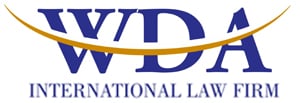Trademarks Basic

Trademarks Basic
Register your trademarks through WDA LAW and have the peace of mind that comes with choosing the best firm. Our lawyers will register your trademarks with customized assistance 365 days a year. Contact us now!
Calls to Phone: 1-(305) 428-2034 Whatsapp click here 1-809-540-8001![]()
In the intricate landscape of intellectual property law, trademarks stand as crucial elements for businesses, providing distinctive identities to products and services. This article aims to provide a comprehensive understanding of trademarks, covering fundamental aspects, their significance, registration processes, and the protection they afford to businesses.
Defining Trademarks Basic:
A trademark Basic is a symbol, word, phrase, or design that identifies and distinguishes the source of goods or services of one party from those of others. It serves as a unique identifier, creating a connection between the consumer and the brand. Trademarks can take various forms, including logos, brand names, slogans, and even distinctive packaging.
Significance of Trademarks:
Brand Recognition: Trademarks play a pivotal role in brand recognition. They are the visual and conceptual representation of a brand, helping consumers associate a particular set of qualities and characteristics with a specific product or service.
Consumer Trust: A well-established trademark builds trust among consumers. It signifies consistent quality and allows consumers to make informed choices, fostering loyalty and repeat business.
Competitive Edge: Trademarks provide a competitive edge in the market. They enable businesses to stand out among competitors, helping consumers differentiate between similar products or services.
Basic Elements of Trademarks:
Distinctiveness: Trademarks should be distinctive, meaning they set the brand apart from others. Fanciful or arbitrary marks, such as invented words or unique symbols, are often considered more distinctive than generic or descriptive terms.
Non-Functionality: Trademarks Basic cannot be functional. They should not serve a purely utilitarian purpose but rather identify and distinguish the source of goods or services.
Non-Deceptiveness: Trademarks should not be deceptive or likely to cause confusion among consumers. Clear and accurate representation is essential to maintain the integrity of the trademark system.
Trademark Registration Process:
Trademark Search: Before filing for registration, it’s crucial to conduct a comprehensive trademark search to ensure the proposed mark is unique and doesn’t conflict with existing trademarks.
Application Filing: The trademark registration process begins with filing an application with the relevant intellectual property office. This application includes details about the mark, its intended use, and the goods or services it will represent.
Examination: The intellectual property office examines the application to verify its compliance with legal requirements. This may involve assessing the distinctiveness of the mark and checking for potential conflicts with existing registrations.
Publication: If the application passes the examination, it is published in an official gazette or journal, allowing the public to oppose the registration if they believe it infringes on their rights.
Opposition Period: After publication, there is a designated period during which third parties can oppose the registration. If no oppositions are filed, or if they are resolved in favor of the applicant, the mark proceeds to registration.
Issuance of Certificate: Once the registration process is complete, the intellectual property office issues a certificate of registration, granting exclusive rights to the trademark owner.
Protection and Enforcement of Trademarks:
Exclusive Rights: Trademark registration provides the owner with exclusive rights to use the mark in connection with the specified goods or services. This exclusivity is territorial and subject to renewal.
Enforcement: Trademark owners have the responsibility to monitor and enforce their rights. This includes taking legal action against infringing parties to prevent unauthorized use of the mark.
Infringement Actions: Infringement occurs when a third party uses a mark that is identical or similar to a registered trademark in connection with similar goods or services, leading to confusion among consumers. Trademark owners can take legal action to stop such infringement.
International Considerations:
Madrid System: Seeking international protection, the Madrid System provides a streamlined process for registering trademarks Basic in multiple countries through a single application.
WIPO: The World Intellectual Property Organization (WIPO) plays a significant role in facilitating the international registration and protection of trademarks, offering a centralized system for trademark applications.
In conclusion, trademarks are indispensable assets for businesses, serving as the visual representation oftheir identity and values. Understanding the fundamentals of trademarks, the registration process, and the subsequent protection and enforcement mechanisms is crucial for businesses looking to establish a strong and recognizable presence in the market. As businesses continue to navigate the global marketplace







